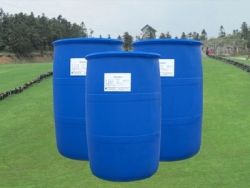At present, chemical flooding is the main method of tertiary oil recovery in China. Surfactants are suitable for chemical flooding. On the basis of practical work experience, many experts and scholars have put forward requirements for surfactant for oil field flooding, which are summarized as follows:
1) Surfactant has high activity on oil-water interface and strong ability to reduce oil-water interface, which makes the interfacial tension between oil and water lower than 10.2 mN/m, and has a certain degree of solubility. The cloud point is not affected by PH value or has a small impact.

2) The interaction between surfactant and rock surface is small, and the adsorption capacity on rock surface is weak or not easy to be adsorbed.
3) Surfactants are soluble in formation water and have a greater diffusion speed, but have a stronger anti dilution ability, that is, the ability to reduce the interfacial tension between oil and water due to the decrease of surfactant concentration or become smaller, and the oil displacement effect is better.
4) It has good stability, and does not react with other chemicals or injected water, bottom materials, and has no cracking and degradation reaction.
5) In the process of oil displacement, consider the relationship between the compatibility of surfactant displacement system and the degree of reservoir development.
6) Surfactants adapt to the conditions of oil displacement reservoir temperature and salinity, and have high temperature resistance and salt resistance. There are many ways to classify different types of surfactants. The common type is the structure of hydrophilic ionic groups of surfactants in aqueous solution, which can be divided into five types: anionic, cationic, zwitterionic, non-ionic and mixed; According to the molecular weight, it can be divided into low molecular surfactant (molecular weight 300) and high molecular surfactant (molecular weight above 1000); According to the requirements of reservoir conditions for surfactant performance of tertiary oil recovery technology, it can be divided into salt resistant surfactant system, temperature resistant surfactant system, salt resistant and high temperature resistant surfactant system and surfactant system under special formation conditions; According to the source classification, it can be divided into natural surfactant, synthetic surfactant and biosurfactant; According to solubility, surfactants can be classified into water-soluble surfactants and oil soluble surfactants.